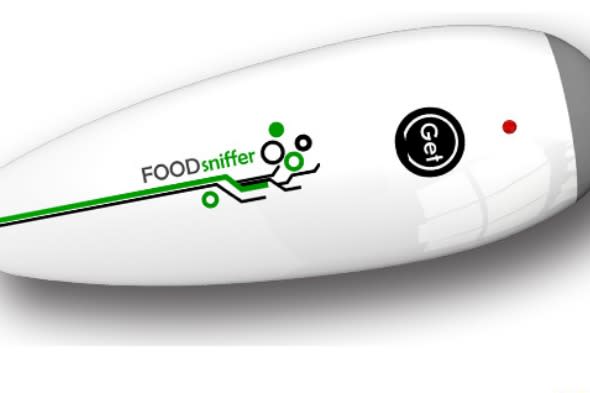Will this gadget mean an end to 'best before' food waste?
We've all faced that moment at the fridge where we find something that looks safe to eat, but is past its use-by date. More often than not we sniff it, consider the horrors of food poisoning, and then err on the side of caution - adding to the millions of tonnes of perfectly edible food sent to landfill each year. The Foodsniffer promises to put an end to all this - because it can tell whether food is safe to eat.
The gadget is referred to by its manufacturers as an 'electronic nose'. It has special sensors, which pick up the temperature, humidity, and presence of ammonia or organic compounds (some of which are harmful) in your food. Then it sends the results direct to your smartphone via Bluetooth.
All you do is hold the Foodsniffer close to the food, press a button, and then check your phone. The gadget is designed to produce a simple 'fresh' or 'not fresh' reading, so you don't have to analyse the findings for yourself.
It was invented by Augustas Alesiunas, who highlights that one in three people in developed countries will come down with food poisoning each year - including 5 million people in the UK, so he argues that it's a worthwhile investment to keep yourself sickness-free. He says: "After experiencing food poisoning myself, I have decided to create a device that would help me and my family easily check the freshness and quality of our food."
%VIRTUAL-ArticleSidebar-food-guide%
The Foodsniffer costs £80. It will be launched next month, and the first deliveries are expected in July.
End of 'best before' dates?
The question is whether it should change the way we use the dates printed on food from the supermarket.
There are two dates written on most fresh food - a 'best before' date and a 'use by date'. The food sniffer is unlikely to make any difference to the way you use the 'best before' date, as it's intended as a guide to taste rather than food safety. The food may well be safe to eat after the date shown, but might not taste so good.
The date that the Foodsniffer is more closely related to is the 'use by' date, which indicates the last date on which the distributor believes the product is safe to eat. The Food Standards Agency advice remains that if something is past its use-by date, then it is not safe to eat.
It quotes Dr Roy Betts, Head of Microbiology at Campden BRI who explains that: "Use-by dates are established by food manufacturers using a combination of predictive models and microbiological testing." He says this means this is why they can be relied on as an accurate predictor of safety.
But what do you think? Will you stick with 'use by', or would you trust a new gadget? Let us know in the comments.
Food poisoning on AOL Money
Deep fried cockroach in bag of chips leads to £1,000 fine
Chicken prices could rise as shops bid to tackle deadly bug
Curry house closed after poisoning health inspectors





